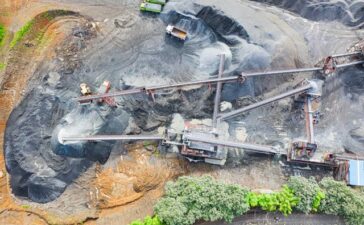Swimming pools are synonymous with leisure, exercise, and outdoor enjoyment. Whether you’re dreaming of a backyard oasis or a resort-style pool, the process of swimming pool construction is a complex and exciting journey that can transform your vision into a reality. In this article, we’ll delve into the intricacies of swimming pool construction, exploring the key stages, design considerations, materials, and factors that make each pool project unique.

Every swimming pool construction ocean grove project begins with a vision. Before breaking ground, it’s crucial to outline your preferences, needs, and expectations for the pool. This initial stage involves detailed discussions with pool designers or architects to create a blueprint that aligns with your goals. Factors to consider include the pool’s purpose, size, shape, depth, and style, as well as the surrounding landscape and available space. Compliance with local regulations and obtaining necessary permits are vital aspects of swimming pool construction. Municipal codes and regulations govern pool placement, safety features, fencing, drainage, and more. Pool builders and designers are well-versed in navigating these requirements, ensuring that the project adheres to all legal and safety standards. It’s essential to factor in the time and cost associated with obtaining permits in your project timeline and budget.
The excavation phase marks the beginning of physical construction. A designated area is excavated to create the pool’s shape and depth. The soil removed during excavation is used for backfilling around the pool. The site preparation stage also involves grading, levelling, and installing drainage systems to manage water runoff and prevent erosion. The structural construction phase is where the pool’s shell takes shape. The choice of construction material plays a significant role in this phase. Three common options are concrete, fibreglass, and vinyl. Concrete pools are the most versatile, as they allow for intricate designs and can be tailored to suit various shapes and sizes. Fiberglass pools offer a shorter construction timeline and require less maintenance. Vinyl pools involve the installation of a vinyl liner within a structure made of wood or metal.
Filtration and water treatment systems are the backbone of a clean and safe pool. Filters, pumps, and chemical treatment systems are installed to maintain water quality. Regular maintenance and monitoring are essential to ensure that the pool water is safe for swimming. Swimming pool construction includes the installation of safety features and accessories. These can include pool fencing, alarms, covers, and handrails to enhance safety. Additionally, the addition of accessories like pool lights, water features, and diving boards can enhance the pool’s aesthetics and entertainment value.

Landscaping plays a significant role in blending the pool into its surroundings. Plants, trees, and shrubs are selected to complement the pool area, providing shade, privacy, and aesthetic appeal. The landscaping phase is where the pool area truly comes to life, creating an inviting and tranquil outdoor space. Before a pool can be used, it must undergo a series of final inspections and tests. These assessments verify that the pool adheres to safety and construction standards, that all systems are functioning correctly, and that water quality meets health regulations. Once the pool passes these inspections, it’s ready for use.





